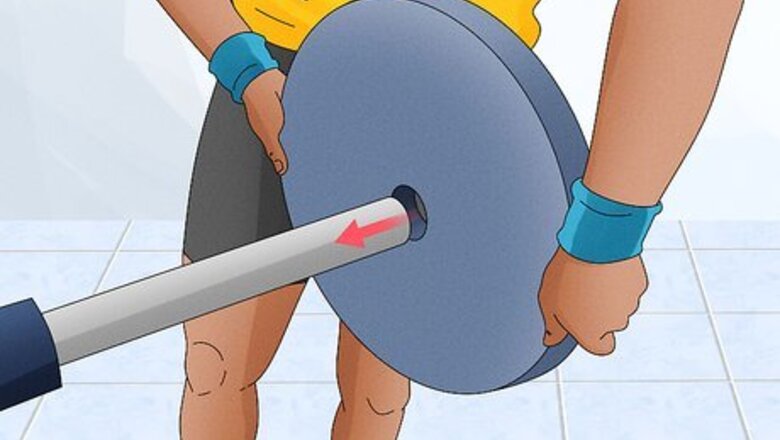
views
- Hold the bar with the bottom of your palms where they connect to your forearms, not the middle of your palms.
- If you can’t keep your wrists straight, use less weight; it’s not worth sacrificing form for more resistance, and it can damage your wrists.
- Use wrist wraps or a wrist brace for additional support if you really want to, but your wrist extensors and flexors can weaken over time if you become dependent on them.
Proper Technique
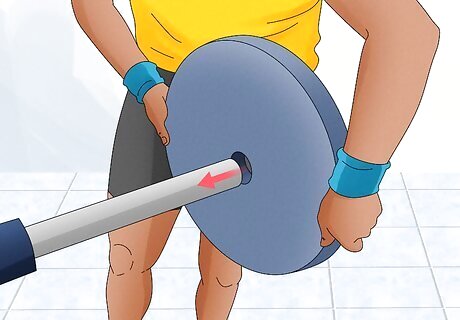
Load the bar with an amount of weight that’s comfortable for you to lift. Don’t load the bar with so much weight that it’s super hard to lift or you can end up hurting your shoulders, wrists, and other body parts. Lifting too much weight forces your body into painful and risky positions. An amount of weight that allows you to comfortably perform 10-12 reps is a good place to start.
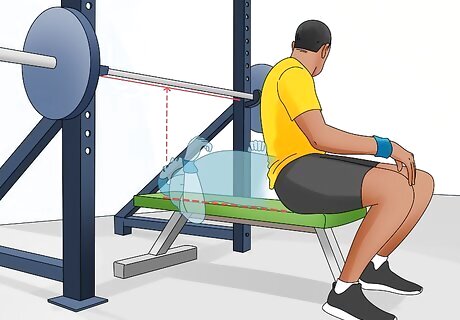
Lie on the bench with your eyes directly below the bar. Sit on the end of the bench and lie down with your back flat on the bench and your feet flat on the ground. Make sure you can reach the bar comfortably with your arms fully extended. This starting position allows you to lift the bar without bending your wrists.
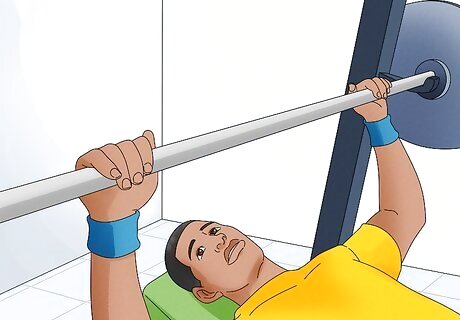
Grip the bar with the bottom parts of your hands and your wrists straight. Grab the bar tightly in your fists, with your arms at about shoulder width, so the bar sits in the grooves between your thumbs and the bottoms of your index fingers. Clench your thumbs tightly around the bar. Grabbing the bar too high up on your hands, like just below your fingers, is a common reason many people bend their wrists when bench pressing. Don’t start with a grip any wider than shoulder-width. Using a grip that’s too wide is a common mistake that can lead to poor form and injury.
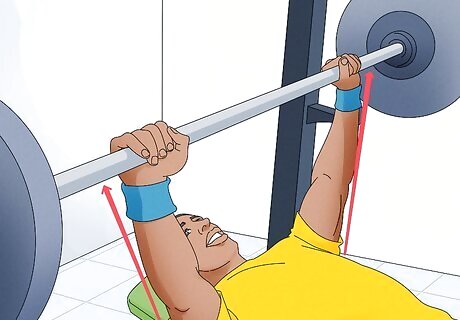
Lift the bar by straightening your arms. Keep a tight grip on the bar, keep your wrists straight, and push up with your arms. Push the bar up off the rack until its above your shoulders and your elbows are locked. If you can’t lift the bar off the rack without bending your wrists, remove some weight until you can comfortably do so.
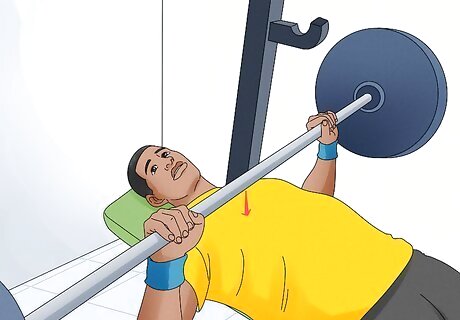
Lower the bar down slowly to your chest, allowing your elbows to bend out. Bend your elbows out slowly to the sides of your chest to lower the bar straight down in a controlled motion. Stop when the bar is just above the midpoint of your chest and your elbows are just below the side edges of the bench. Lowering the bar to this spot helps keep your wrists in a neutral position. Breathe in slowly while you lower the bar down to your chest. You can touch the bar to your chest if it’s comfortable to do so.
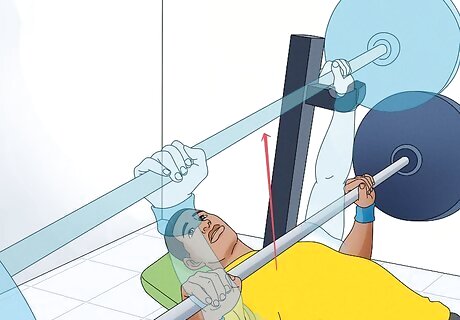
Press your feet into the floor and push the bar straight up. Straighten your arms, with your wrists in a neutral position, and tuck your elbows in at your sides to push the bar up. Raise the bar until it’s back above your shoulders in the starting position with your elbows locked again. Really focus on keeping your grip tight around the bar while you’re pushing it up and don’t unclench your thumbs from around the bar. Keep your neck neutral and your upper back flat on the bench as you do this. Avoid rolling your shoulders back or lifting up your chest. Arching your lower back a bit is okay as long as you keep your upper back and shoulders flat. Breathe out slowly as you push the bar back up.
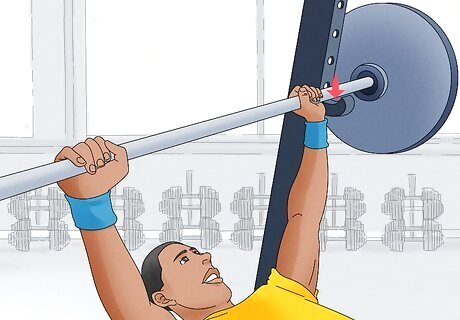
Re-rack the bar when you finish your reps. Carefully lower the bar back onto the rack. Make sure the bar is secure before you release the tension and let go of it. If you’re benching a lot of weight, get a spotter to help you re-rack the bar. This will also help prevent wrist strain.
Wrist Wraps
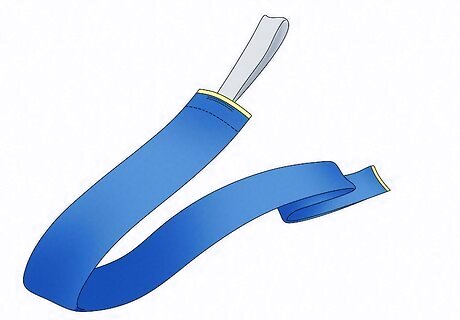
Use wrist wraps for additional wrist support when you lift more weight. Buy a pair of 24 in (61 cm) long wrist wraps from a sporting goods store or online for good support. Wear them when you want to increase the weight you’re lifting to an amount that is too heavy for your current wrist strength. Don’t use wrist wraps every single time you’re benching or you can become reliant on them. Just use them when you really need the extra wrist support. If you become too reliant on wrist wraps, your wrists won’t get stronger as your chest does and you can have a harder time keeping your wrists straight as you bench heavier weights.
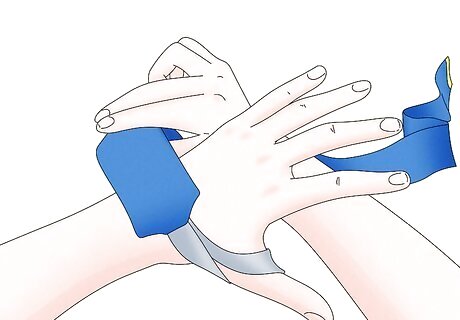
Bend your wrist forward slightly and hold the end of a wrap. Pinch the end of the wrap between your thumb and palm to hold it in place or put your thumb through the thumb loop, if it has one. Bend your wrist forward at about a 45-degree angle with the wrap held firmly in place to get started. This helps ensure that there is no risk of your wrist bending backwards while bench pressing.
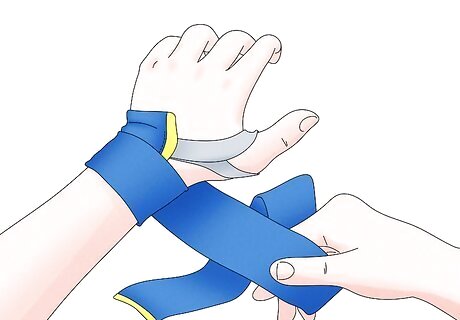
Pass the wrap around the bottom of your palm to start wrapping your wrist. Pull the fabric to about about 60% of the maximum tightness that you’re able to. Wrap it 1 time around the bottom of your palm and across the back of the top of your wrist for the first pass around your wrist. If you don’t wrap the bottom of your palm as well as your wrist, you aren’t giving your wrist enough support to keep it straight while benching.
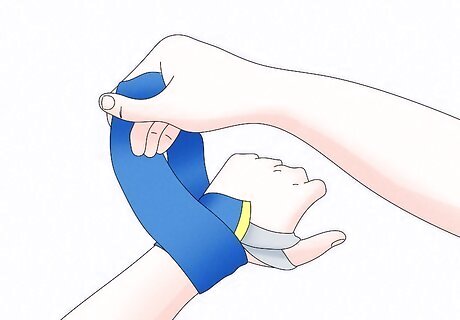
Wrap the next pass around your wrist, a bit tighter than the last. Make 1 more full revolution with the wrap around the inside and back of your wrist. This time, wrap the fabric at about 80% of the maximum tightness that you’re able to. Never wrap any lower than your wrist or you won’t give it enough stability. There shouldn’t be any fabric around your forearm.
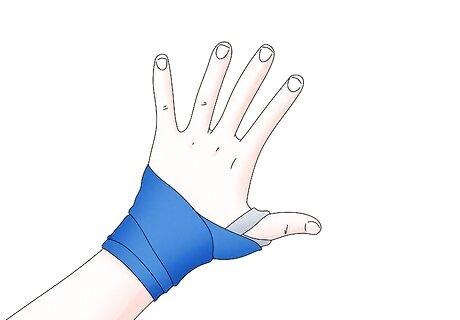
Make a final, even tighter, wrap around the top of the wrist. Pass the wrist wrap 1 more time around your wrist, just below the bottom of your palm. Wrap it as tightly as you can for this final pass and press the Velcro into place to secure the end. The process for wrapping either wrist is exactly the same, so repeat all the steps 1 more time to wrap the other side and you’re all done!
















Comments
0 comment